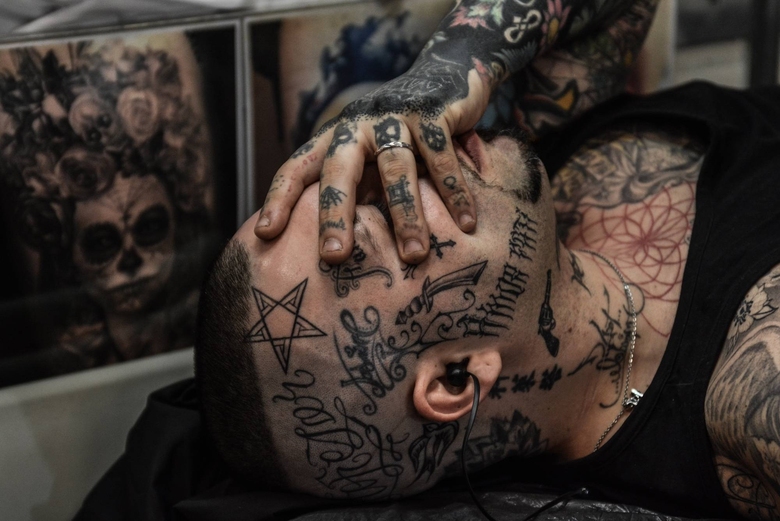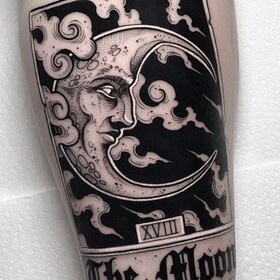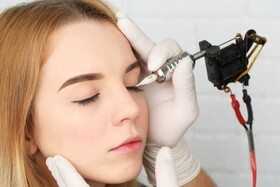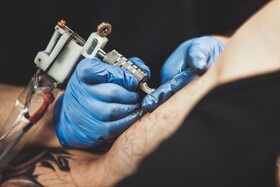Tattoo anesthesia: Pros and Cons. How to choose an anesthetic?

Pain is the strongest deterrent for someone considering a tattoo. Gone are the days when tattoos were a test of one's body and spirit. Especially now, in the modern, civilized, comfortable world, where every step of an average person is surrounded by things and services aimed at satisfying their needs with maximum comfort.
Admit it, even against the backdrop of most medical procedures, tattooing with its guaranteed pain sensations throughout several hours of a session seems somewhat archaic and sometimes terrifying to that same average person to the extent that they begin to weigh "fashion" and "comfort" on the scales.
Many people give up on getting a tattoo precisely at this stage, deciding that it is not the time, not the place, and that mercury is retrograde after all - may it be cursed! Those who still decide to go all the way begin to look for workarounds in the form of anesthesia, because damn it, it's 2024, and these endless scientists should have come up with something by now.

First of all, calm down. Calmness is the very first natural painkiller given to us that will at least relieve "phantom" or psychoemotional factors of pain.
Yet, you know about drug testing, where one group of subjects is given a real drug, and the other - placebos, but both groups are told that they have the guaranteed cure for their illness, pain, bad mood, etc.
In conducting similar studies of topical anesthetics, regardless of whether a drug or placebo was used in the group, the number of people with acute pain perception decreased solely due to persuasion that they had an effective drug.
It's absolutely the same here. Fear makes things seem bigger than they are. It is fear that makes many people run away at the first sound of a working machine or begin to experience pain even where it cannot be, for example, during the transfer of the sketch onto the skin.
In reality, the hype around pain in tattooing is somewhat exaggerated. To a large extent, it is fueled by the artists themselves to appear cooler. In fact, technology is not standing still. Machines, needles, care products, cosmetics, and the entire tattoo industry are working for you. For your comfort, safety, and satisfaction.
Therefore, the first thing you need to do is to calm down, get a good night's sleep, have a proper meal, and avoid alcohol for at least 24 hours before the session. Then you can fully enjoy the tattooing process, which, as you will likely notice, is not that painful after all.


What if it still hurts?
If it really hurts, but you really want the tattoo - then you can't do without topical anesthetic creams.
It's important to understand a simple truth: not everything that has bright packaging or high percentages of active ingredients is a safe anesthetic. Health is truly important, so before running to the store for a "guaranteed super strong and safe" cream, let's get a little more serious and go through the points that will help us understand what manufacturers are offering and what will suit you best.
Concentration and percentages on the packaging
This is the first puppet of marketers that most buyers trust. In the mind of an ordinary person, if the concentration is higher - then the product is more effective. But not in the case of anesthetics. For example, a 5% lidocaine + prilocaine emulsion is twice as effective in anesthesia compared to a single-component lidocaine solution with a concentration of about 40%.
Thus, manufacturers who chase only the concentration of the active substance either do not know what they are producing or are little interested in it. Therefore, do not fall for the tricks of marketers, and first of all pay attention to products that have medical certification.
Cream, gel, or ointment?
Clinical trials by scientists have shown that an emulsion is most effective at lower concentrations of substances compared to creams and ointments with higher concentrations. But emulsion has a higher consumption rate.
How long should painkillers be used before a session?
Usually, the average time is indicated on the medication packaging, without taking into account the specific application site and individual skin characteristics (such as oiliness, thickness, etc.). Therefore, even if the application time is the same, the effectiveness of the medication may vary depending on the site of application. In the case of medically certified products, it is better to adhere to the time indicated in the instructions.
Additional components
Various additional components included in the composition of pain relievers allow for an increase in the duration of their action and a decrease in the toxicity of the solution. Among these, adrenaline, epinephrine, and phenylephrine are usually used.
What are the risks of using anesthesia?
Firstly, there are allergic reactions caused by individual intolerance to certain components of the substance.
Secondly, there are toxic reactions. They can be both individual and due to exceeding the permissible concentration of substances.
The concentration can be exceeded by:
- using uncertified products with an unclear composition. Again, we repeat our warning regarding the use of such products. Only medical certification should be trusted;
- using much more medication than necessary according to the instructions, and/or exceeding the permissible area of application.
These are the most dangerous risks that can have consequences up to and including death. Before using any anesthetic medication, carefully read the instructions and follow it impeccably! Remember, everything you do is at your own risk.
The best way to conclude this article is with advice: DO NOT USE any anesthetic for tattooing, and simply follow the advice from the first part of this article.
Stay calm, healthy, and strong - then the tattoo session will be enjoyable without any pain relief.







Comments (0)